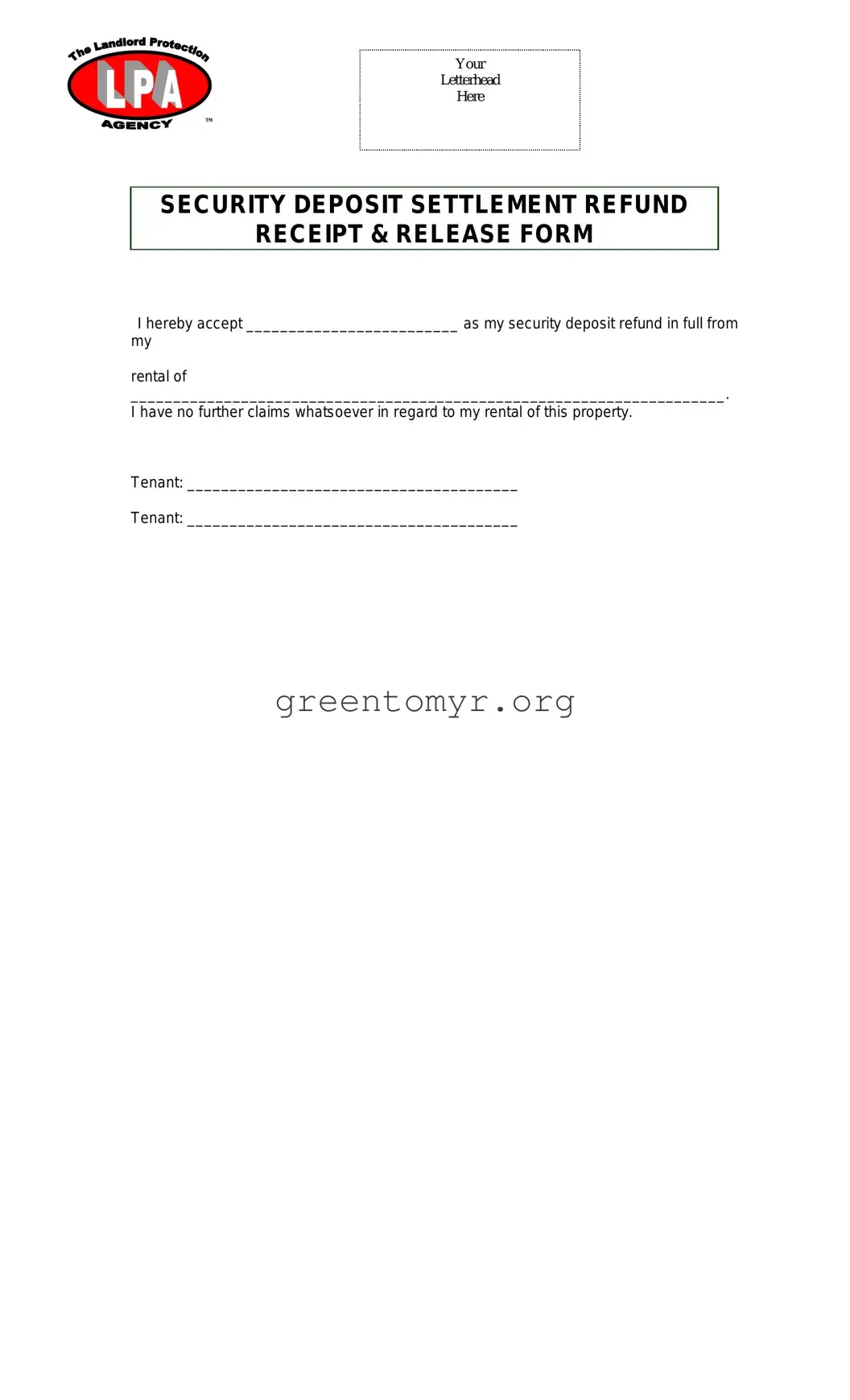Fill in a Valid Deposit Refund Receipt Template
The Deposit Refund Receipt form is a crucial document that formalizes the return of a security deposit from a landlord to a tenant. It serves to confirm that the tenant has received their security deposit in full, releasing any further claims related to the rental property. Understanding how to properly fill out this form is essential for both parties to ensure a smooth conclusion to the rental agreement.
Ready to complete your form? Click the button below to get started!

